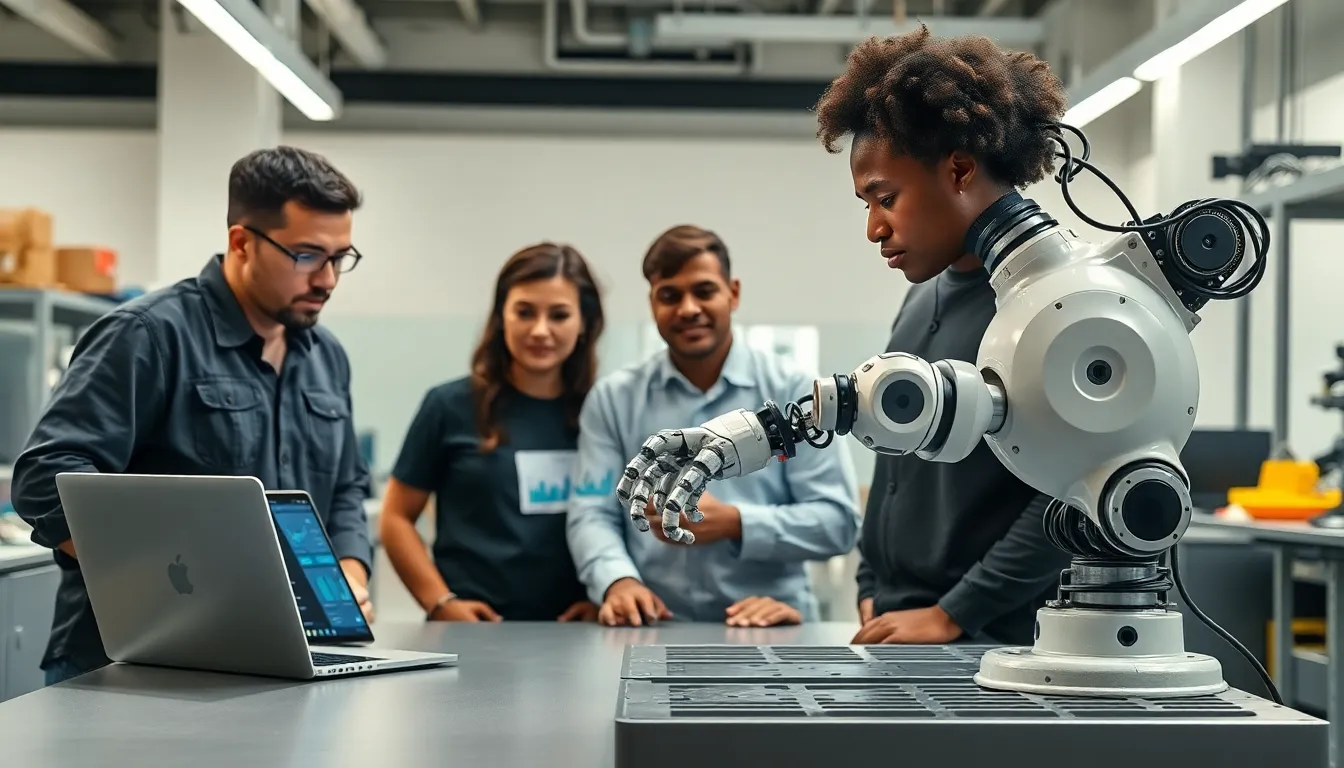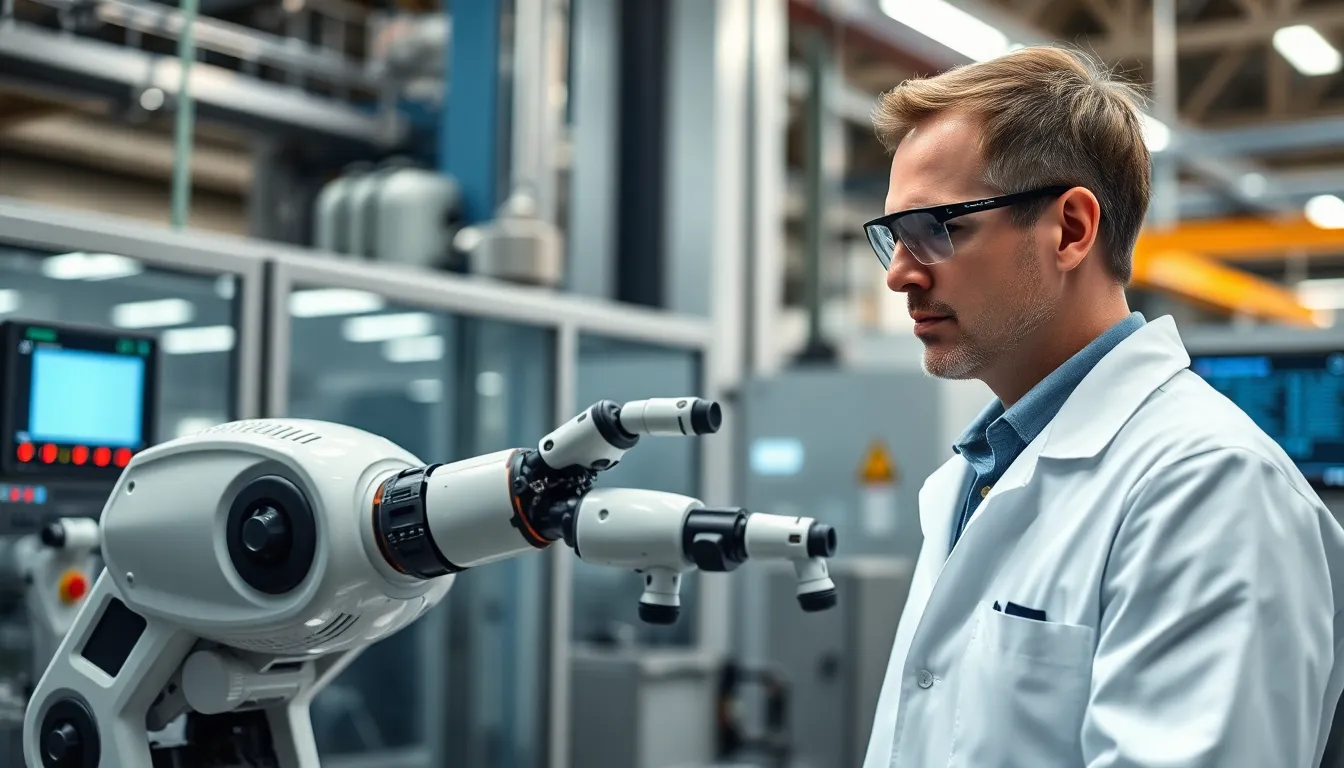In a world where robots are becoming our new best friends, understanding their performance metrics is like checking their report cards. After all, nobody wants a robotic assistant that can’t tell the difference between a coffee cup and a trash can. With the rise of automation, knowing how to measure a robot’s efficiency, accuracy, and reliability has never been more crucial.
Think of robot performance metrics as the secret sauce that keeps the gears turning smoothly. These metrics help organizations optimize their robotic workforce, ensuring they’re not just good at dancing but also at getting the job done. Dive into the fascinating world of robot performance metrics and discover how they can transform your tech-savvy dreams into reality—without the awkward robot dance moves.
Table of Contents
ToggleOverview Of Robot Performance Metrics
Robot performance metrics assess various factors that influence the functionality of robots. Understanding these metrics is vital for organizations aiming to enhance automation and optimize robotic tasks effectively.
Definition And Importance
Robot performance metrics refer to quantitative measures evaluating a robot’s efficiency, accuracy, and reliability. These metrics provide insights into how well a robot executes tasks, enabling organizations to make informed adjustments and improvements. By tracking these measures, companies can identify areas for enhancement and ensure optimal performance in real-world applications. Moreover, monitoring performance metrics fosters accountability for robotic systems, ensuring they align with user expectations and operational standards.
Key Metrics Categories
Key categories of robot performance metrics include efficiency, accuracy, reliability, and safety. Efficiency metrics assess the speed and resource usage during operations. Accuracy metrics evaluate how closely a robot meets predefined objectives or executes commands. Reliability focuses on a robot’s consistency over time, while safety metrics gauge the robot’s ability to operate without posing risks to humans or equipment. These categories comprehensively cover essential aspects of robotic performance, guiding improvements and ensuring effective operations in various environments.
Types Of Robot Performance Metrics

Robot performance metrics encompass various categories that evaluate their operational capabilities. Understanding these metrics helps organizations optimize robotic functionality in practical applications.
Speed And Efficiency
Speed measures how quickly a robot completes tasks. Efficiency looks at how well a robot uses resources like power and time. For instance, robots that can perform repetitive tasks faster without wasting energy are considered more efficient. Metrics like throughput quantify the number of tasks completed within a specific timeframe. Measuring cycle time also provides insights into the time required to finish a task. Lowering cycle times while maintaining throughput increases overall efficiency.
Accuracy And Precision
Accuracy determines how closely a robot’s actions align with desired outcomes. Metrics in this category include error rate, which quantifies the frequency of mistakes during operation. Precision, on the other hand, assesses the consistency of a robot’s outputs. High precision indicates that a robot consistently produces the same results under similar conditions. Combining accuracy and precision metrics enables organizations to evaluate a robot’s reliability in executing tasks. Ensuring higher accuracy reduces operational risks.
Reliability And Durability
Reliability reflects a robot’s ability to perform consistently over time, while durability assesses how well it withstands wear and environmental factors. Metrics such as mean time between failures (MTBF) indicate the average operational time before encountering issues. Organizations gauge durability through stress tests that assess a robot’s performance under extreme conditions. High reliability and durability ensure that robots minimize downtime and require less maintenance. Together, these factors contribute significantly to maintaining continuous operations in various environments.
Methods For Measuring Robot Performance
Measuring robot performance involves both quantitative and qualitative methods. Different techniques capture various aspects of a robot’s operations.
Quantitative Assessment
Quantitative assessment focuses on numerical data related to robot performance. It encompasses metrics like throughput, cycle time, and error rates. These values offer insights into efficiency and precision. Organizations often calculate throughput by measuring the number of tasks completed per unit of time. Cycle time represents the duration needed to complete one task. Error rates, calculated as the ratio of incorrect tasks to total tasks, gauge the robot’s accuracy. This data provides a clear framework for evaluating performance levels and identifying improvement opportunities.
Qualitative Evaluation
Qualitative evaluation emphasizes subjective factors that impact robot performance. This assessment explores user satisfaction, usability, and adaptability. Feedback from operators reveals how intuitive a robot’s interface is and its ease of integration into existing systems. Through observations and interviews, organizations can identify recurring issues or strengths in performance. Adaptability to different environments or tasks also contributes to this evaluation. Qualitative insights enhance understanding of a robot’s effectiveness beyond numerical data, fostering holistic assessments for better decision-making.
Case Studies Of Robot Performance Metrics
Understanding robot performance metrics across different sectors reveals their impact on efficiency and reliability. This section highlights specific examples involving industrial and service robots.
Industrial Robots
Industrial robots often operate in manufacturing environments where speed and consistency are crucial. Metrics like throughput and cycle time measure how efficiently these robots complete tasks. A case study at a car manufacturing plant showed a 30% reduction in assembly time after implementing performance monitoring. Also, reliability metrics indicated less than a 2% failure rate, ensuring uninterrupted production lines. Companies can optimize workforce allocation by regularly assessing these metrics, leading to significant cost savings and improved output.
Service Robots
Service robots play a vital role in areas like healthcare and hospitality. Performance metrics such as accuracy and user satisfaction gauge their effectiveness. For instance, a hospital’s robotic surgical system achieved a 95% accuracy rate in procedures, greatly enhancing patient outcomes. Moreover, user satisfaction scores increased by 40% after incorporating feedback mechanisms into service robots. By focusing on these metrics, organizations can continually improve services and meet high standards of care and efficiency.
Future Trends In Robot Performance Metrics
Robotic performance metrics are evolving alongside advancements in technology and changing assessment standards. These developments ensure that robots meet the increasing demands of various industries.
Advancements In Technology
Emerging technologies significantly impact robot performance metrics. Artificial intelligence enhances data analysis, allowing for real-time adjustments in operations. Machine learning enables robots to learn from past performances, improving their efficiency and accuracy over time. Integration of sensors provides detailed feedback on operational conditions, which optimizes performance and reduces risks. Innovations in software also streamline data collection, allowing organizations to focus on actionable insights. As technology progresses, performance metrics will become more sophisticated, offering deeper insights into robot capabilities.
Evolving Assessment Standards
Assessment standards for robot performance are continually changing. New benchmarks emphasize adaptability to diverse environments, ensuring that robots can handle varying tasks effectively. Industry regulations increasingly require accountability, motivating organizations to adopt comprehensive performance metrics. Organizations are placing more importance on user experience, leading to assessments that incorporate qualitative factors such as satisfaction and usability. Enhanced standards will drive technological advancements and improve robot effectiveness across industries, ensuring they meet evolving operational demands.
Understanding robot performance metrics is crucial for organizations aiming to optimize their robotic systems. These metrics not only provide insights into efficiency and reliability but also highlight areas for improvement. As technology advances, the integration of AI and machine learning will further enhance these evaluations, allowing robots to adapt and perform better over time.
By prioritizing both quantitative and qualitative assessments, businesses can ensure their robotic workforce meets the evolving demands of various industries. Continuous monitoring and analysis of performance metrics will drive innovation and enhance operational effectiveness, paving the way for a future where robots seamlessly integrate into everyday tasks.





